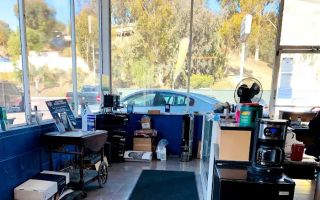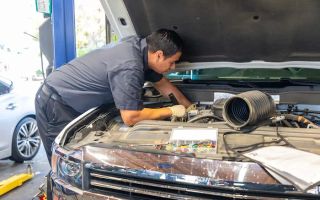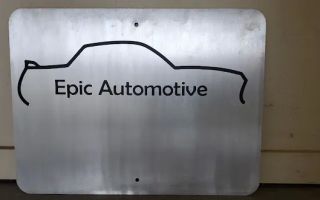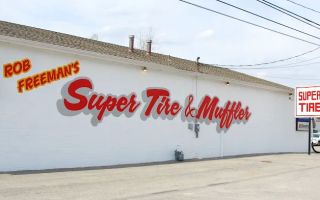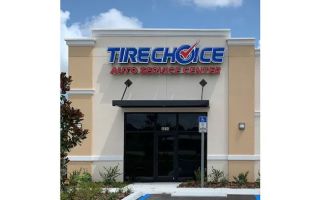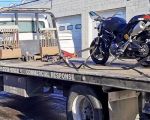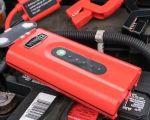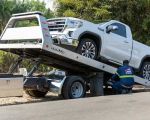When it comes to towing large vehicles, I’ve learned that speed, skill, and precision are absolutely vital. Over the years, I’ve been fortunate enough to have a front-row seat to the challenges and techniques involved in towing oversized vehicles, from large trucks to RVs and other heavy-duty machines. The one thing that consistently stands out in my mind is how crucial it is to act quickly and efficiently. Fast towing for large vehicles isn’t just a service—it’s a lifeline, especially in emergencies when time is of the essence. But what does fast towing really mean, and how can it be done safely and effectively? Let’s take a deep dive into the world of heavy-duty towing, and I’ll share everything I’ve come to understand about the process.
1. The Importance of Speed in Towing Large Vehicles
When you're dealing with large vehicles, every minute counts. I’ve seen countless situations where a delay in towing could lead to serious issues, ranging from traffic disruptions to even worse, accidents. Whether it’s a semi-truck on a busy highway or an RV stuck in a precarious location, the faster we can respond to the situation, the better. Fast towing isn't just about getting the vehicle towed quickly; it's about doing so in a way that prioritizes safety, minimizes damage, and ensures that the vehicle is handled correctly.
One of the first things I’ve learned is that time plays a huge role in ensuring that no further damage occurs to the vehicle. If a truck is involved in a breakdown or an accident, leaving it in place can cause additional strain on its components, leading to mechanical damage. The quicker the tow, the less likely we are to see additional problems down the road. Towing large vehicles also often involves working under pressure, and the faster we are able to assess the situation, the better we can adapt our towing strategy to fit the unique circumstances at hand.
2. Key Challenges of Towing Large Vehicles
Towing large vehicles, like semi-trucks, buses, or heavy-duty construction machinery, presents challenges that are far more complex than those of smaller vehicles. In my experience, the weight of these vehicles is the primary hurdle. Large vehicles are significantly heavier than ordinary cars, which means that regular tow trucks simply aren’t equipped to handle them. They require specialized equipment such as heavy-duty tow trucks, flatbeds, or rotator cranes capable of lifting and transporting massive loads.
Another challenge is the sheer size of the vehicles. Larger vehicles often need a specific set of tools and vehicles to accommodate their dimensions. I’ve had to navigate narrow roads, tight spaces, and uneven terrain, all while ensuring that the towing process doesn't cause any additional damage to the vehicle or surrounding property. Ensuring proper clearance, securing the vehicle correctly, and choosing the best route for towing are just a few of the critical steps involved in ensuring a successful and fast tow.
3. Specialized Equipment for Fast Towing
One of the key components that make fast towing for large vehicles possible is the use of specialized towing equipment. Over the years, I’ve become familiar with various types of heavy-duty tow trucks that are designed specifically for the job. These trucks are built to handle much heavier loads than your standard tow truck and often come with multiple axles to distribute weight evenly. The strength of these trucks is essential for lifting and moving large vehicles without risking damage.
Flatbed trucks are another important piece of equipment I’ve encountered in towing large vehicles. These are especially useful when the vehicle in question cannot be driven onto a traditional tow truck. I’ve found that flatbeds offer the safest and most efficient method of transporting large, disabled vehicles, as they completely lift the vehicle off the ground, preventing further wear and tear.
For particularly heavy or immovable vehicles, we sometimes need to use rotator cranes. These cranes are capable of lifting even the most stubborn or tilted vehicles, providing an added level of flexibility and safety when towing. The use of such specialized equipment helps make fast towing a reality, ensuring that no matter the size or condition of the vehicle, we have the right tools for the job.
4. Preparing for Towing Large Vehicles
There’s a lot more to preparing for towing large vehicles than simply hooking up a truck and driving away. The first thing I’ve learned is to carefully assess the situation before taking any action. This involves evaluating the size, weight, and condition of the vehicle, as well as considering any obstacles in the area that could complicate the towing process.
Additionally, I always make sure to have the right team in place. Towing large vehicles is rarely a one-person job. It takes a coordinated effort, with everyone involved knowing their role. Often, this means having multiple team members on-site to help with traffic control, guide the towing process, and ensure that everything goes smoothly. The best teams are the ones who can communicate effectively and act quickly under pressure, ensuring that large vehicles are towed without any problems.
5. Safety Considerations During Fast Towing
Safety is always the top priority when towing large vehicles. I’ve learned that it’s not just about ensuring the safety of the vehicle being towed but also the safety of the people involved. The sheer size and weight of large vehicles mean that the towing process can be dangerous if not done properly. To minimize risks, we use traffic cones, barriers, and other markers to secure the area around the tow site. We also ensure that our team is equipped with high-visibility safety gear, making sure everyone is clearly visible to oncoming traffic.
Equally important is securing the vehicle itself. If a vehicle is not secured properly, it can shift during the towing process, which could cause damage to both the towed vehicle and the tow truck. I’ve had to ensure that all straps, chains, and tow bars are tightly fastened before any movement begins, checking everything multiple times to make sure it’s secure. The success of fast towing depends not only on speed but also on ensuring everything is in place and properly executed.
6. Handling Emergency Towing Scenarios
Fast towing is often called for in emergency situations, such as accidents or vehicle breakdowns. I’ve encountered many instances where large vehicles break down in dangerous locations, such as busy highways or remote, hard-to-reach areas. In these cases, speed is crucial—not just for getting the vehicle off the road but also for minimizing the risk of further accidents.
In these emergencies, I always try to stay calm and focused. Emergency towing requires careful planning and quick decision-making. Sometimes, we need to tow a vehicle away from traffic, clear debris from the roadway, or even work in inclement weather. The key to success in these situations is knowing exactly how to proceed based on the situation, making quick adjustments, and keeping safety at the forefront of our minds.
7. Cost of Fast Towing for Large Vehicles
Fast towing for large vehicles can come with a higher price tag compared to standard towing services. The cost is often determined by factors such as the weight of the vehicle, the distance it needs to be towed, the type of equipment required, and the urgency of the situation. I’ve seen that prices vary widely depending on the complexity of the job, but in emergency situations, time is of the essence, and getting the right help fast is usually worth the investment.
To get the best value, I recommend researching towing companies in advance, especially if you own a large vehicle. Many companies offer flat-rate pricing for specific services, while others may offer emergency towing at a premium cost. It’s important to choose a service that is reputable, reliable, and capable of handling large vehicle towing efficiently.


